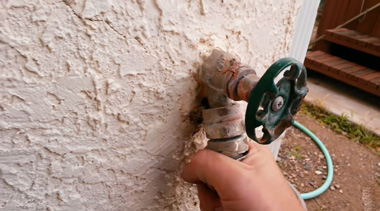An anti-siphon valve helps prevent backflow and potential contamination of the main water supply. A faulty or bad anti-siphon valve will waste significant amounts of water.
So what are the symptoms of a bad anti-siphon valve? The symptoms typically include contaminated water, reduced water pressure from the faucet, and so on. Not only that, but water damage and unusual noise are also signs of the problem.
Understanding the symptoms of a bad anti-siphon valve is essential for maintaining the safety of your plumbing system. In this article, we will have a discussion about these symptoms. We will also talk about ensuring that the valve operates correctly at its full capacity.
Symptoms Of A Bad Anti Siphon Valve

There are quite a few signs and symptoms that you will notice in case you have a bad anti siphon valve. Let us see the top signs of a malfunctioning anti siphon valve.
1. Reduced Water Pressure
One of the top symptoms of a bad valve is a decrease in water pressure. In case the anti-siphon valve is clogged with debris or damaged, it can restrict the flow of water. And this restriction will eventually lead to a drop in water pressure.
This drop can cause low water pressure in faucets, showerheads, and so on. Additionally, it will make it difficult to complete everyday tasks, such as washing dishes, taking a shower, etc.
2. Contaminated Water
Contaminated water is another common sign that the anti siphon valve is not working properly. A malfunctioning anti siphon valve will allow contaminated water from other sources of water into the main water supply. These sources are lawn sprinkler systems, irrigation systems, etc.
On top of that, this backflow can potentially contaminate your drinking water, resulting in several health problems.
3. Unusual Sounds
Another common sign indicating the issue is unusual or strange sounds. Unusual noises from the faucet, such as bubbling or gurgling when turning the tap on, indicate a problem with the valve.
These sounds are caused by the release of air pressure or water trying to flow through a clogged or damaged valve. Make sure to pay attention to these sounds and fix the issue as soon as you notice it.
4. Leaks And Drips
A damaged or worn anti siphon valve will result in leaks and drips. This problem will lead to significant water waste and potential water damage.
In case the problem is left unrepaired, the leak can cause severe damage to your home and property. These damages typically include water-stained ceilings, warped flooring, mold growth, and so on.
5. Water Damage
Last but not least, a leaking or damaged anti siphon valve can cause water damage to the surrounding area. The damage affects the foundation, walls, and flooring of a home. It also causes damage to the furniture in the house.
Not only that, but water damage can lead to major structural issues, mold growth, and other health and safety concerns. It is essential to address the problem immediately to prevent further damage.
How to Fix a Bad Anti-Siphon Valve?
Fixing a malfunctioning anti siphon valve immediately is a must. The bad valve can cause severe damage, which eventually leads to expensive repairs. See the steps on how to fix a bad anti siphon valve without much trouble.
Step 1: Turn Off The Water Supply
The first step of the repairing process is to turn off the main water supply. Make sure that you check and turn the supply off before inspecting or fixing the valve.
Step 2: Locate The Valve
Locate the valve connected to the faucet or tap you are checking. The anti-siphon valve is typically situated near the water supply. You will usually find it above the ground and connected to the plumbing system.
Step 3: Inspect The Valve
Once you have located the valve, it is time to inspect it properly. Look for signs or symptoms indicating damage to the valve. After inspection, take necessary action to fix the trouble.
Step 4: Replace The Valve
In case the valve is clogged or malfunctioning, try to identify the cause and repair it. However, if the valve is damaged beyond repair, you will have to replace it with a new one.
In order to do this, you will need to disconnect the old valve and install the new valve in its place. Make sure to reconnect the pipes to the new valve.
Step 5: Test The Valve
Once the valve has been installed or repaired, turn the water supply back on. Check the valve properly and make sure that there are no leaks, unusual sounds, or any other symptoms. Do not forget to ensure whether the water pressure is correct or not.
FAQs
Do you have any questions about the anti siphon valve? Read these questions to get your answers!
Usually, the pricing varies from $50 to $150 or more. The cost of replacing an anti siphon valve typically depends on the quality of the valve you are choosing. Labor costs also play a major role in the cost.
Yes, you can fix the anti siphon valve by yourself if you have proper knowledge about plumbing. It is a crucial component and requires proper attention. However, we prefer relying on a professional for the task.
Final Words
The plumbing system is highly complex, with several crucial components in place. One of these components is the anti siphon valve which prevents the water from contamination and other issues. Now that you know the symptoms of a bad anti siphon valve, we believe you can easily identify the problem.
Make sure that you keep an eye out for the signs we have mentioned above. And do not forget to follow the steps carefully when replacing the valve.